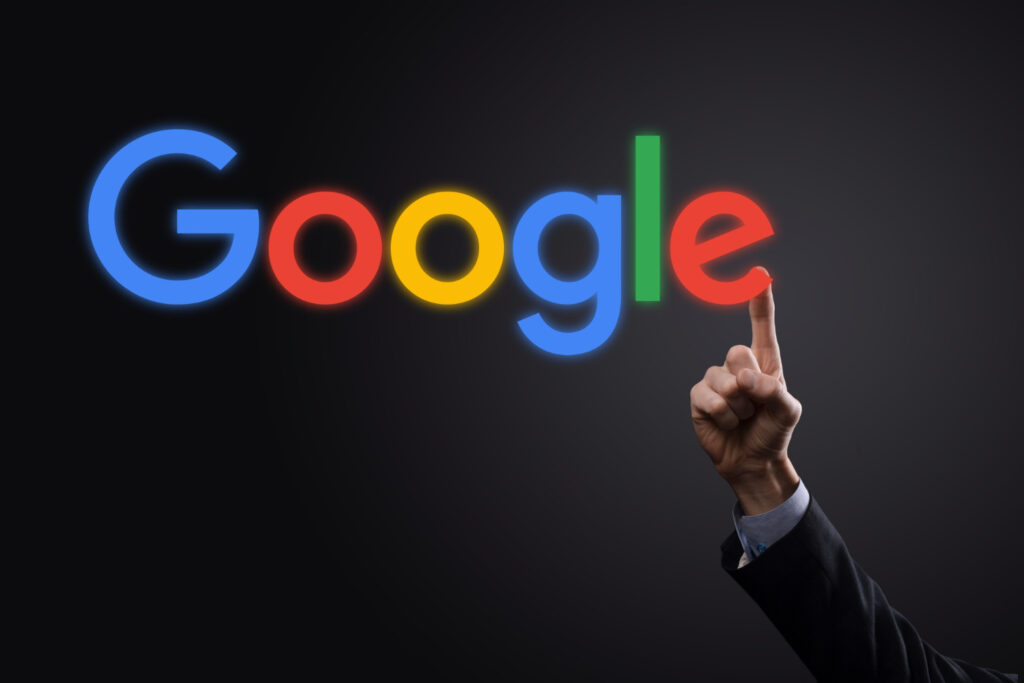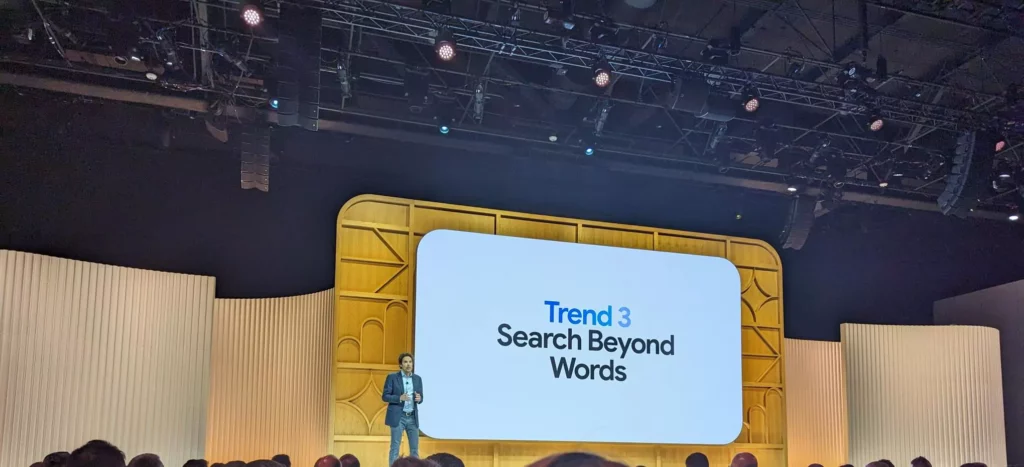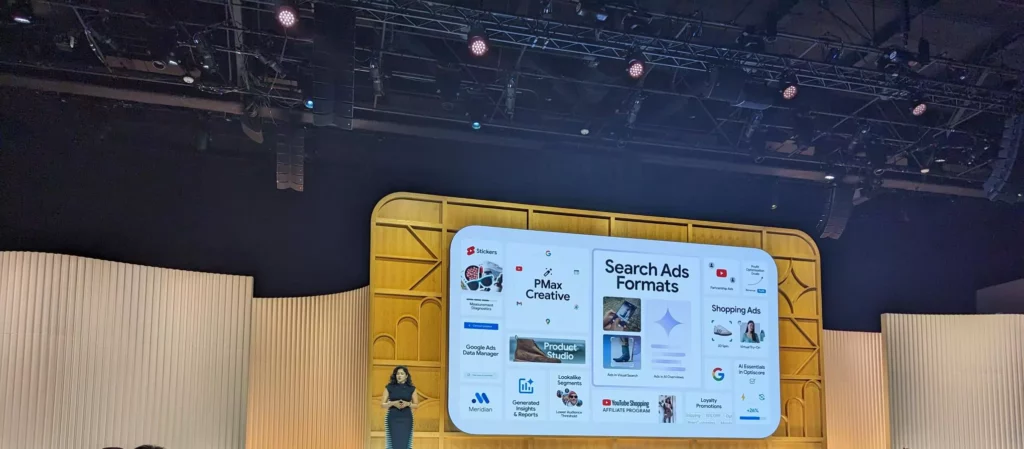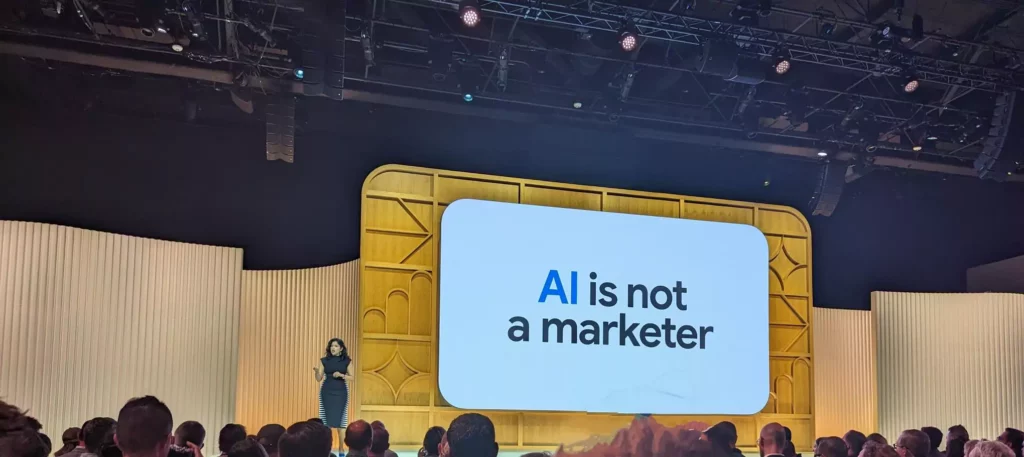

Last updated on

After a decade of tuning in to Google Marketing Live through my computer screen, this year I finally got to experience the event firsthand.
For those unfamiliar, Google Marketing Live is Google’s yearly event where they reveal their latest product announcements tailored for Google advertisers.
This time around, Google introduced a whopping 30 updates for Google Ads! Though not all were highlighted in the keynote, they all revolved around one central theme.
The bulk of the product updates can be sorted into these primary pillars of Google Ads:
Outlined below are the key product updates I’m eagerly anticipating in 2024.
As anticipated, Google has unveiled several updates tailored specifically for advertisers, focusing on ad creatives and functionalities. These updates encompass:
It’s worth noting that not all announced updates will be immediately available. Google has indicated that the rollout of the new brand standard guidelines is slated for the later months.
In the dynamic live keynote, a highlight emerged during Philipp Schindler’s demonstration showcasing cutting-edge generative AI technology. This demonstration ignited curiosity and creativity, prompting contemplation of unconventional methods for searching and interacting to uncover fresh insights.

Consequently, new advertising opportunities have emerged, presenting an expanded ad space for advertisers to explore and leverage.
Here are some highlights of the key media announcements within Google Ads:
Similar to the creative announcements, not all of these updates will be immediately available.
Shopping ads and loyalty promotions are scheduled to roll out gradually over the next few months, specifically in visual search results.
As for AI Overviews, Google is initiating the ad placement rollout as a limited experiment in the United States. Insights gained from this trial will inform the enhancement of the experience as it evolves.
Though I anticipated more excitement surrounding advancements in measurement, the buzz was minimal, with only a fleeting mention of enhanced reporting for Performance Max campaigns.
Here’s a more detailed breakdown of the measurement-related announcements:
During the concise hour and 15-minute keynote, we were introduced to an array of fresh updates. As outlined below, these updates impact numerous campaign types and are either accessible now or slated for release in the upcoming months.

Given these updates, is there an overarching theme at play?
Within the scope of the Google Marketing Live updates, several key themes emerged prominently for me.
Many of the updates announced during Google Marketing Live focused on content creation, automation, and animation. Essentially, Google appears fully committed to video content, particularly emphasizing YouTube Shorts.
Failure to integrate video content into your marketing strategy could potentially lead to falling behind competitors and experiencing decreased engagement.
Despite some advertisers shying away from video content due to perceived complexities or resource constraints, Google’s updates democratize video creation. Now, anyone can easily initiate video content creation directly from their phone, with Google’s tools capable of transforming images into dynamic video content.
Integrating video into your Google Ads strategy has the potential to foster stronger connections with your target audience.
During the keynote, Google emphasized, “AI isn’t a marketer.” Essentially, advertisers, your roles are secure for now. However, while AI isn’t directly involved in marketing, we as marketers must develop an AI strategy to adapt to these evolving landscapes.

Attempting to outsmart the Google Ads system or exerting excessive control may hinder the growth and scalability of your campaigns.
To craft an effective AI strategy, consider these key points:
Remember, the quality of AI outputs often depends on the quality of inputs, which is where your expertise as a marketer becomes crucial.
When leveraged correctly and strategically, these new AI tools can streamline your workload, accelerate learning, and facilitate real-time decision-making to optimize campaigns.
For a comprehensive overview of Google Ads product announcements, refer to the official article from Google.
Original news from SearchEngineJournal